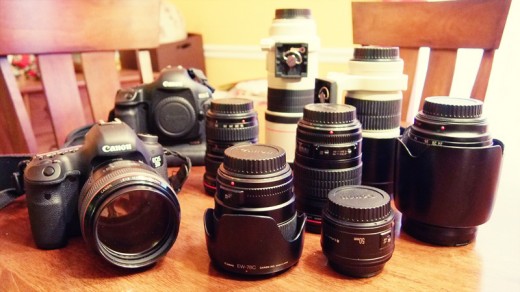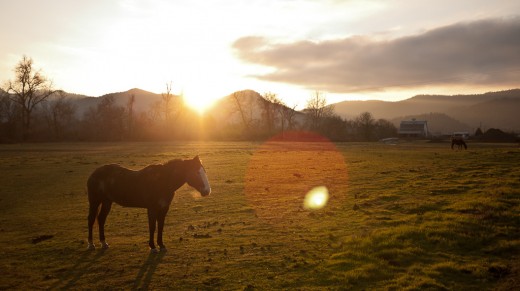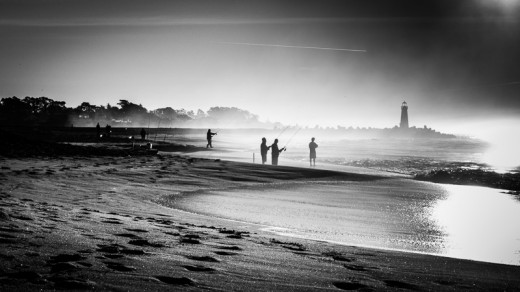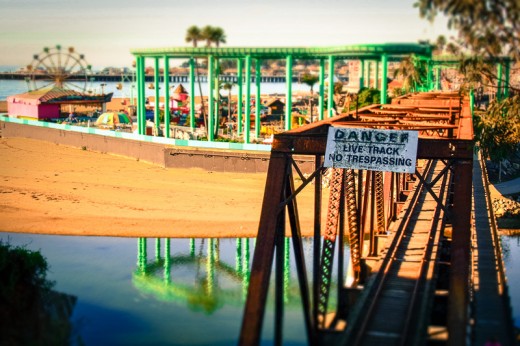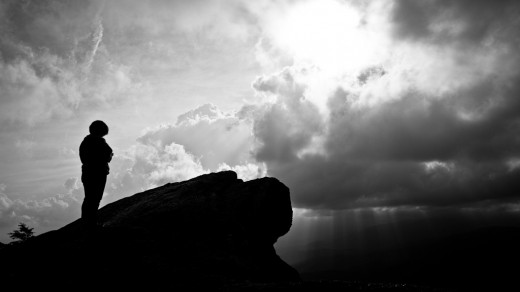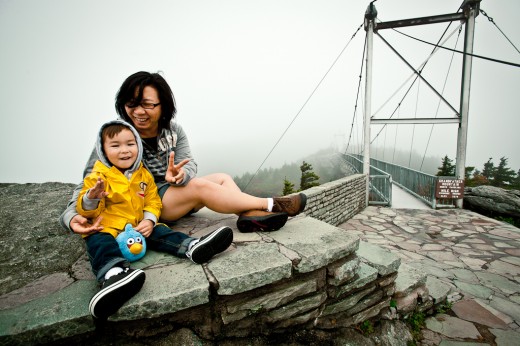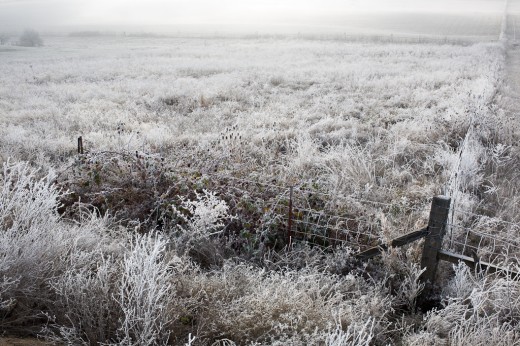Zen and the Art of Gear Selections
If you are like me, and most photographers I know who have been shooting for a couple of years, you’ve probably started accumulating some gear. Maybe you are smart or never suffer from Gear Aquisition Syndrome, but most serious folks I know have a decent–and weighty–collection.
If you are at all like me, you like to travel, and you like to photograph when you travel. I don’t know about you, but I try to be as minimalist as possible when traveling–I like to be streamlined and unencumbered. A suitcase full of gear doesn’t usually meet my expectation of unencumbered, even when it’s packed in something as wonderfully thought out as the ThinkTank Airport International (I am in no way affiliated with ThinkTank, but I love their bags, so will pimp them when appropriate). So then comes the inevitable internal debate, as I weigh the pros and cons of each piece of gear, both in isolation and in relation to the whole, agonizing over which lenses best compliment each other, whether I will need a speedlight, whether I can fit a tripod in my bag, etc. I figured it was time to make a post about the Zen of Gear Selection when traveling, and go over some of my own experiences as a traveling photographer.
Priortization: Selecting Gear for Intended Purpose
This all came about because I’m traveling to the west coast at the end of the month. The trip is both personal and professional–I will be visiting friends and family, but I will also be shooting several portrait sessions along the way. So I have a dual agenda–one that requires I have the correct tools for the job, and another that is looser, more free wheeling, as I explore the pacific northwest. Originally, I had planned to take a few zooms and a few primes. But then we decided that my four year old was coming along for the trip, which means I have to manage all of his stuff in addition to mine. Suddenly, the premiums on small size and light weight went up considerably.
 For any trip, unless you are planning to take the whole suitcase of stuff, you will have to select your gear based on your photographic priorities for the trip. You may find that there is no one perfect answer, or that there are several answers that work as well as another. A few years ago I traveled to New York with only 16-35 and 135mm lenses, and didn’t feel like I missed out on much. On other trips, when the emphasis wasn’t on photography or when I wanted to travel very light, I took various mirrorless cameras and lenses. For this trip, since I am getting paid to photograph people, image quality is a top consideration, as is appropriate focal length. Top image quality dictates that I take the 5D mark III. Because there are paid gigs, a backup camera is also a requirement. Suddenly, I have two big Canon DSLR bodies and we haven’t even started talking lenses. If I still want to travel light-ish, I have to start getting creative. And that’s where it all gets to be sort of maddening unless you remind yourself to simplify, simplify, simplify.
For any trip, unless you are planning to take the whole suitcase of stuff, you will have to select your gear based on your photographic priorities for the trip. You may find that there is no one perfect answer, or that there are several answers that work as well as another. A few years ago I traveled to New York with only 16-35 and 135mm lenses, and didn’t feel like I missed out on much. On other trips, when the emphasis wasn’t on photography or when I wanted to travel very light, I took various mirrorless cameras and lenses. For this trip, since I am getting paid to photograph people, image quality is a top consideration, as is appropriate focal length. Top image quality dictates that I take the 5D mark III. Because there are paid gigs, a backup camera is also a requirement. Suddenly, I have two big Canon DSLR bodies and we haven’t even started talking lenses. If I still want to travel light-ish, I have to start getting creative. And that’s where it all gets to be sort of maddening unless you remind yourself to simplify, simplify, simplify.
Wearing Many Hats: Selecting Gear that Can Serve Multiple Functions
You might ask, since having backups is important, since image quality is a top consideration, and since I will be photographing a very eclectic mix of situations–portraits, babies, families, landscapes, documentary of my trip–why I don’t just suck it up and take everything. You never know what might come up, and you might need the lens for it. I’ve traveled that way, when I brought everything to photograph a wedding in Kansas City, and it was fine. It was the right thing to do, since it meant I had ample backups, gear, etc. for whatever situation I was going to come into. But it’s heavy, and cumbersome, and a pain to roll or carry that bag around with you everywhere. I can’t check it, either, so it becomes more problematic when I am traveling with my son.
My solution is to choose gear that is more flexible so that one lens can serve many purposes, and thus eliminate some of the more single-purpose lenses. For example, I have no reason to bring my 300mm lens on this trip–it’s too single purpose (I use it almost exclusively for wildlife). A lens like the 16-35 can cover both portraits (as I like to shoot them) and also landscapes, but is limited if you want to compress some mountains into a composition with lots of layers. Or if you want to shoot more traditional portraits. Or if you’re in very low light. So maybe it’s too limited purpose.
Whatever thought process you go through, choose lenses that can do double or triple duty, rather than single duty. Even though you LOVE your 24mm TS-E, unless you are planning to REALLY use it on your trip, leave it at home.
For a trip that involves both portraits with kids and also landscapes/urban environments, something like the 24-70 f/2.8 comes immediately to mind. You have a good wide angle, a decent telephoto, and a reasonably fast aperture. The lens is on the heavy side, but not terrible. It is weather-sealed against the elements like Seattle rain. It’s kind of a do it all lens, a workhorse. I have taken some of my very favorite images, and some of my very favorite portraits, with that lens. So, take the midrange zoom and maybe an 85 0r 135mm lens to add variety, and case closed, right? For you, maybe. For me in some situations, maybe. That’s not what I chose this time, but it wouldn’t have been a bad choice. I’ll discuss why I chose what I chose a bit later.
One important thing to consider when we’re talking about flexibility and choosing lenses/gear for travel: assuming you’re not taking everything, you will often find that you end up choosing lenses differently. You may opt for a zoom when you’d normally grab a prime, you might bring only a 24-70 instead of the 16-35 and 70-200 you usually use. You might make those choices because they give you more flexibility. Just consider the tradeoffs as you choose one over another, or add or subtract to your kit. which brings us to…
Balance
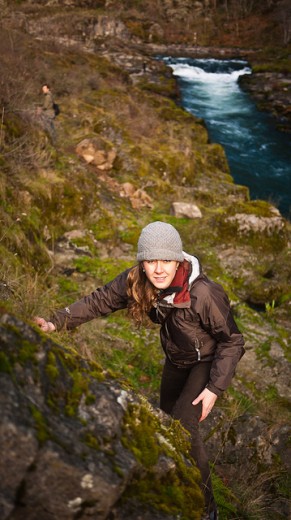 When you pack your bags, you must consider size, weight, image quality, shooting style, access, travel, etc. There are many considerations to keep in mind. Beyond that, amongst the gear itself, you are balancing focal length range, aperture, lens quality, etc. If you choose a zoom over a prime, you gain flexibility and weight, but usually give up some aperture and image quality. If you choose an ultra-wide angle for landscapes, you might give up the midrange you like for portraits.
When you pack your bags, you must consider size, weight, image quality, shooting style, access, travel, etc. There are many considerations to keep in mind. Beyond that, amongst the gear itself, you are balancing focal length range, aperture, lens quality, etc. If you choose a zoom over a prime, you gain flexibility and weight, but usually give up some aperture and image quality. If you choose an ultra-wide angle for landscapes, you might give up the midrange you like for portraits.
In my specific case, I had to figure out how to get everything essential I wanted to take into a Tamrac Adventure Messenger 4, which is not a big bag. I considered a ThinkTank Urban Disguise 50, which is a fabulous bag, but decided against it. the TT UD50 could easily hold everything I needed to take, plus my laptop, but then if I’d decided to walk the streets of Seattle all day one day, I would have had to carry that bulky bag at my side, or I would have to pack another, smaller camera bag. You will find that air travel packing needs are often at odds with your end goal like this. Photographers have a lot of different bags for a reason. So I chose the bag I could comfortably and relatively inconspicuously carry around the city all day.
Great, Mark, but that bag is small! And you’re talking about taking both a 5D Mark III and a 1D Mark III, plus whatever accessories you need, plus lenses! Given that you don’t want to check camera gear, and given that I had chosen this small bag, I had to consider the balance, had to consider my end goals. All of these things played into what I ultimately chose to do.
The Gear Doesn’t Matter, Except When it Does
Choosing the photos for this blog post, I was struck by how many I took with mirrorless cameras and pretty minimal gear. To be fair, usually I am not mixing business with pleasure when traveling, so lens selections often aren’t critical. Still, I am a photographer and I like to document where I go, so I try to take competent and appropriate gear with me whenever possible. As I shift my focus to professional photography in 2013, I hope to be able to make more trips like this that are both working and playing.
Ultimately, you will find ways to make photographs with whatever lenses you choose. As you have heard over and over and over and over and over, the photographer is what really matters, not the gear. Except that it does, and you can’t ignore that. Especially when someone is paying you to take photos. It would be irresponsible of me to fly to the west coast, armed with 16-35 and nothing else, and show up to shoot family portraits. Could I do it? Probably. Could I do it BETTER with something else? Yes.
Your creative vision, your creative style, and your comfort level all matter. But the gear DOES matter, and you need to prioritize your selections based on the priorities of the trip. Choosing very flexible lenses and cameras helps–you might be able to leave the primes at home because your full-frame camera is so good at high ISO, for example. Or you might be able to leave the tripod at home because you’re taking fast primes with that full-frame camera. There are many different variables for each trip and each photographer, which is why you won’t ever find one catch-all recommendation for the perfect travel kit. There isn’t one.
The Zen, and What I Actually Chose
Okay, okay, so we’ve spent a whole lot of time obsessing over gear here, even though I wrote really early on that a 24-70 f/2.8 would cover just about anything and not be huge. So why are we still here? Because that’s not what I chose, and I want to explain why. I think that’s important, even if you totally disagree.
Along with my 1D Mark III and my 5D Mark III, I will be taking a 35mm f/1.4 and an 85mm f/1.2. I considered a 135mm f/2 in place of the 85 because the longer lens is lighter, faster focusing, and very sharp. Ultimately, I settled on the 85 for its wider aperture, shorter focal length (it’s more comfortable for me), and my overall familiarity with the lens. I chose the 35 because it is the most flexible lens I own–it works great for intimate portraits, landscapes, urban environments, street photography, etc. I prefer the subject isolation and lower ISOs that these primes offer, which is why I chose them over the zoom. Further, I don’t often shoot on a tripod, and have been known to shoot landscapes at wide apertures, so I wanted lenses that I could handhold, even at night. The primes are both compact (the 85 is short, even if it has considerable girth) and relatively lightweight (the 85 is pretty hefty, but the penalty for the image quality is acceptable for me here). I regularly use these two lenses to cover wedding receptions, and, if pressed, could probably cover a whole wedding with just the two. They are two of Canon’s best and sharpest lenses, and have a unique look that you can’t duplicate with other lenses.
The two lenses and the two cameras could, technically, fit in the Tamrac bag, but the 1D3 is really shoehorned in there. To solve that problem, I ordered a Domke Protective Wrap–essentially flexible padding–so that I could wrap the 1D3 and put it in my backpack, which I’m carrying on (and that contains my laptop and other stuff). That way, I am better utilizing my backpack that I plan to bring anyway, and I am eliminating the need to bring two camera bags. When I get to the west coast, I’ll leave one camera at home or in the car while I’m exploring, and during photo sessions I’ll have both cameras out with a lens on each so I won’t have the need to carry both in the bag.
I will miss shots, and I will miss opportunities at both the wide focal lengths and the long ones. When I considered all the variables, and most importantly, when I considered my own shooting style and vision, it was an easy choice to make, in the end. I have also chosen appropriate tools for the professional work, so the top priorities are covered.
Try not to obsess about these things. If you apply a little Zen to your considerations, it doesn’t have to be something you agonize over. Strip away anything excessive, simplify until you have only the essential. Consider what is most important to you, and to the job at hand. And, don’t blindly follow other people’s suggestions, just because they’ve taken the time to write about them on the internet. Only YOU know to choose the 24-70 over two primes, only YOU know whether or not you will need that speedlite.
Final Note
I mentioned, in passing, that many of these photos were taken with mirrorless cameras. Often, when I am traveling with my family, many other priorities push photography down the list. When that happens, I often take just one mirrorless camera and one or two lenses, generally a midrange kit zoom and a fast, normalish prime. These cameras have taught me how to make the most of limited parameters, and how to exploit the strengths of the equipment while minimizing the weaknesses. They have helped me on this meditative quest for Zen, and they are a great touchstone when I start considering the many combinations of gear that could work and with which I could encumber myself.
Take only what is necessary, leave the rest behind.
